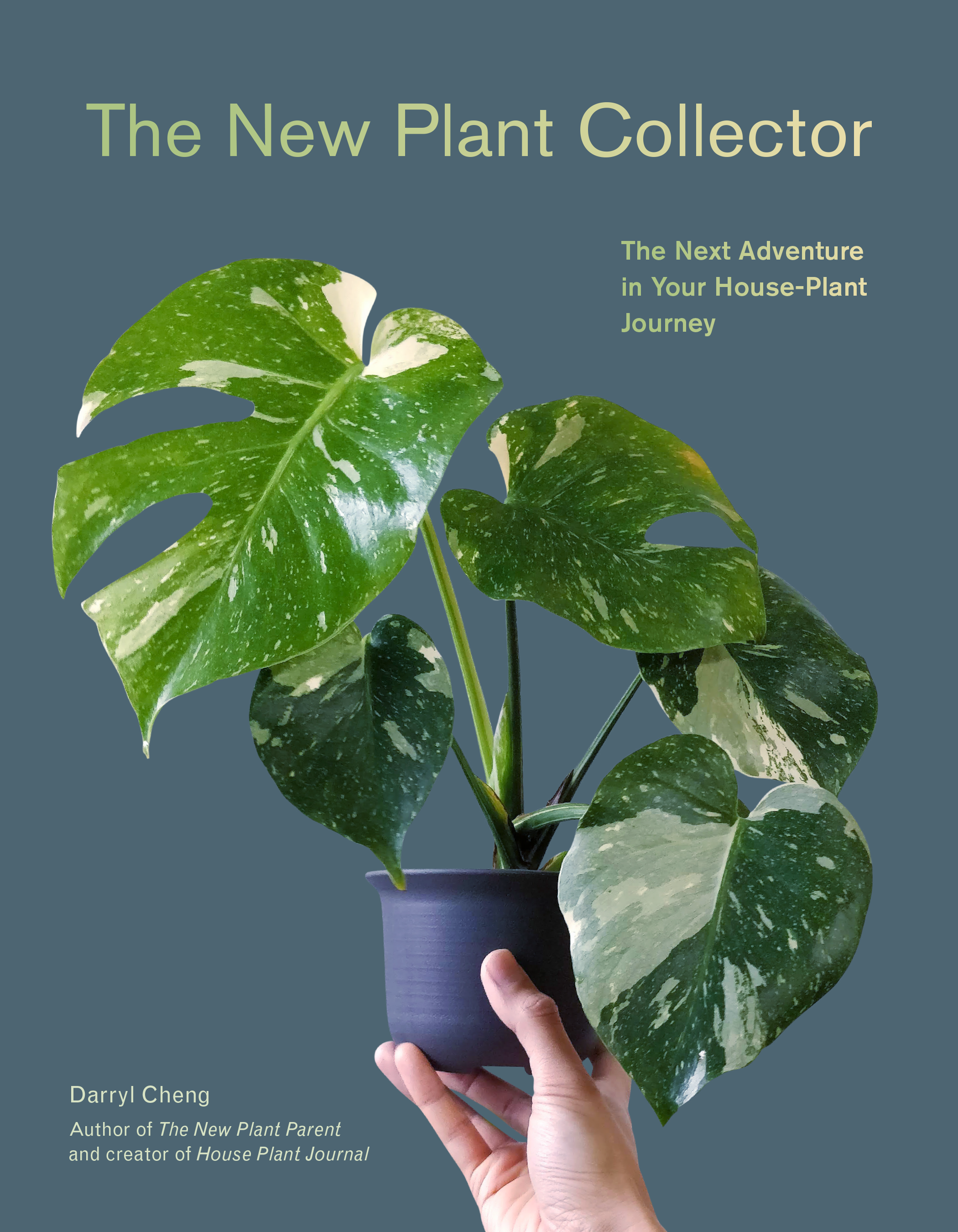In this article, I’ll show you 4 grow lights I have personally used with satisfactory results. I’ll share my thoughts on what makes them a good choice, which plants would benefit from them, but also why you might look for an alternative.
*** LIST OF HOUSEPLANTS with GROW LIGHT STRENGTH RECOMMENDATIONS ***
Disclaimer: this article contains affiliate links from Amazon. A portion of sales goes to support the work of House Plant Journal. I’m also pleased to present some brand partners who I’ve selected because I’ve been very happy with their products. The SANSI 70W Daylight LED Grow Light was generously provided by Sansi. The Aspect grow light is from Soltech Solutions.
But to start, let me do the “light meter” rant:
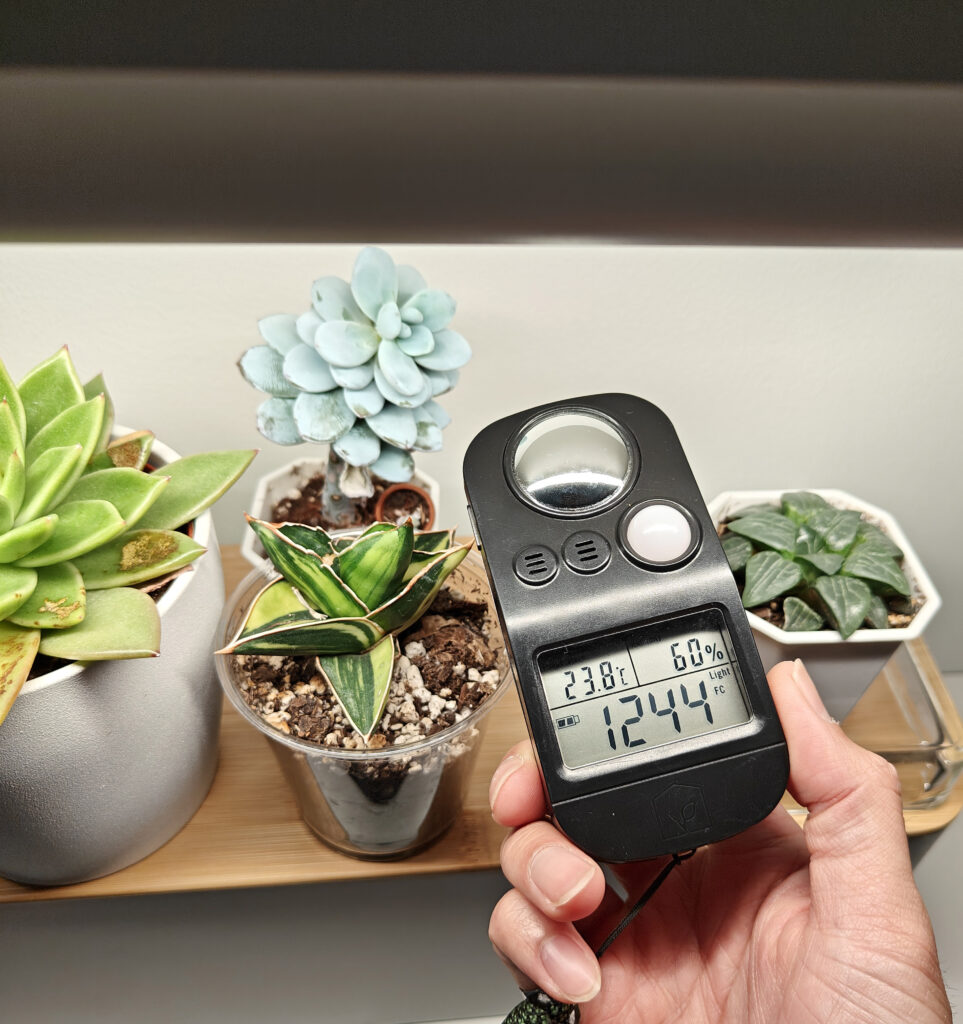
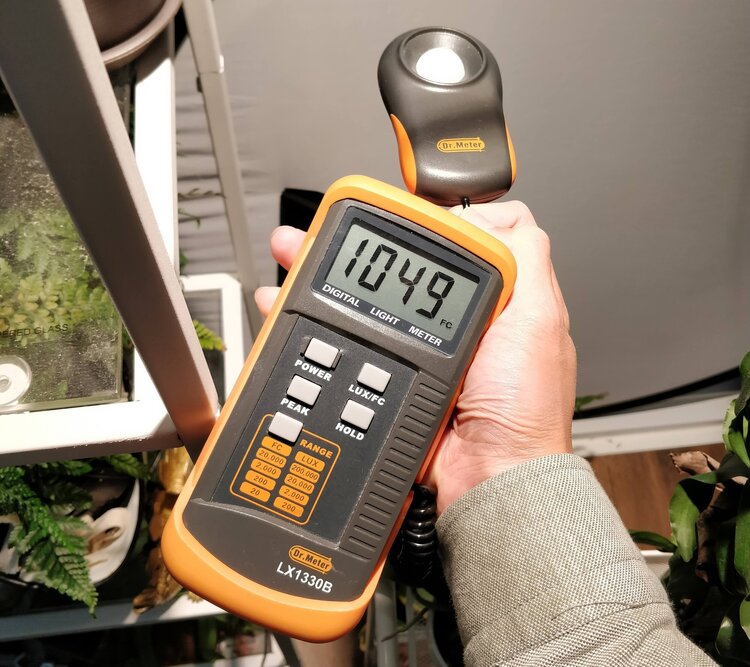
If you’re confused about how to choose a grow light, it’s because the manufacturers are throwing lots of specifications at you AND trying to get you to understand what they mean AND trying to convince you of what’s important…the burden shouldn’t be completely on them!
Do yourself a favor and get a light meter (measuring lux or foot-candles), otherwise you won’t have any concrete way to even roughly* compare your natural light with the strength of a grow light. It would be like buying an oven and not being able to set a specific temperature – guessing won’t cut it!
*I say “roughly” because light from the sun is different from all artificial sources when you look at their spectral distribution – that’s for another blog post! For now, if you’re just growing plants for fun, being able to measure lux/fc will suffice – it’s WAY better than trying to judge with only your eyes!
But how strong does the light need to be for each plant??? Refer to THIS TABLE
The Sekonic Spectromaster C-700: seeing light like never before!
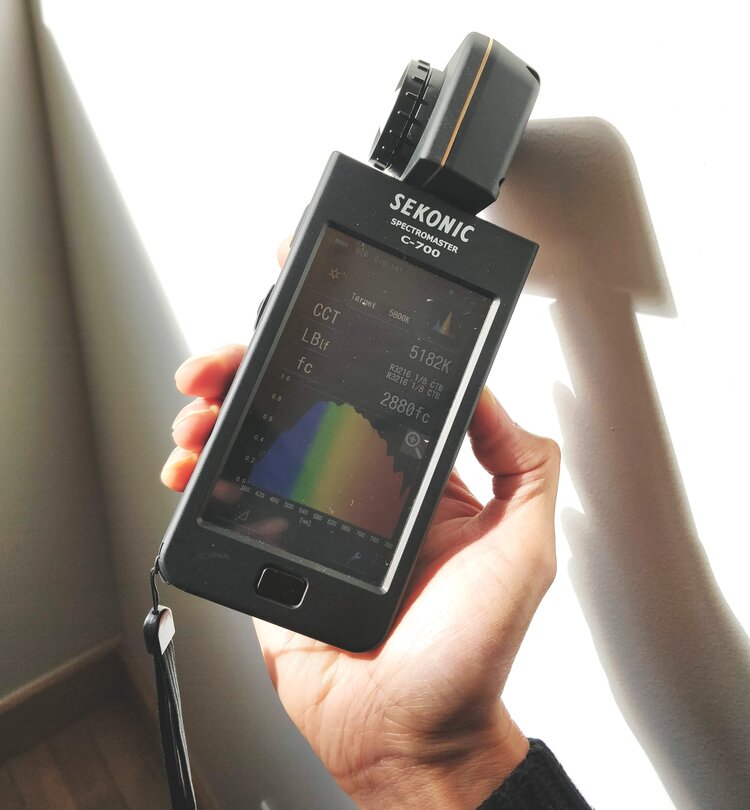
In order to really see what’s inside the light, my friends at Soltech Solutions let me borrow their Spectromaster C-700, which is normally used by the film industry to get very precise color information about any light source. I’ve been having a blast analyzing the spectral distribution all kinds of light sources – I’ll do a separate blog post on it!
While I can already hear the horticulturalists saying “you should be using a PAR meter!” – you don’t get to see the spectral character of the light with a quantum meter. So for this article, I’ll just use the Spectromaster C-700 to measure foot-candles and spectral distribution.
Adjustable Blue/Red Grow Light: https://amzn.to/2L4E8lw
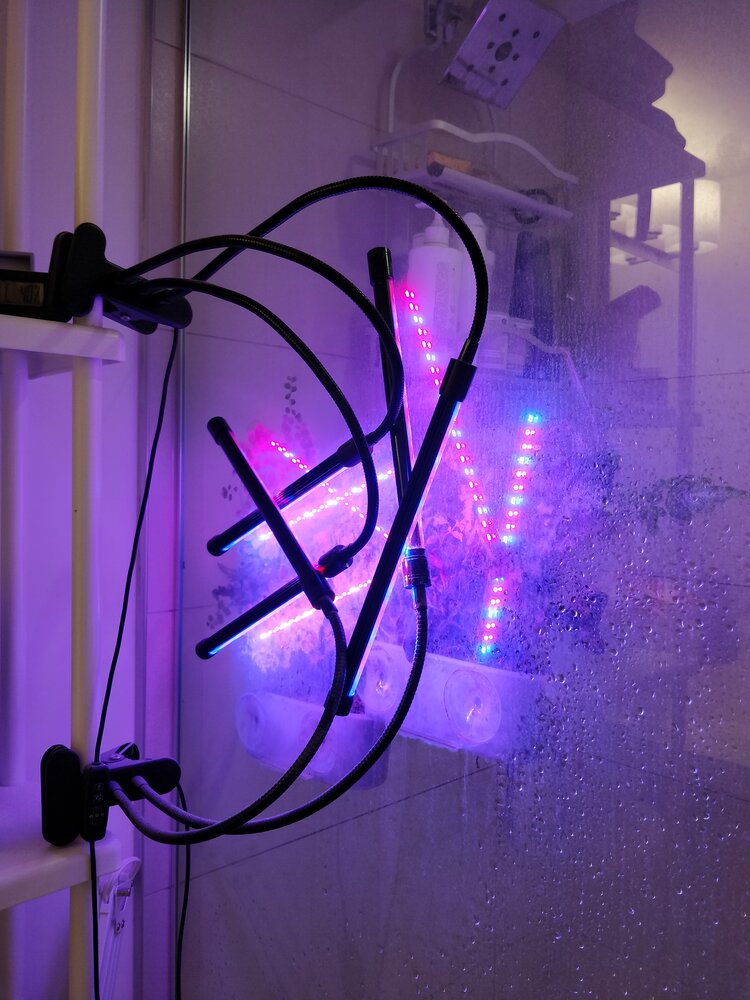
Why only blue and red LEDs?
Research showed this:
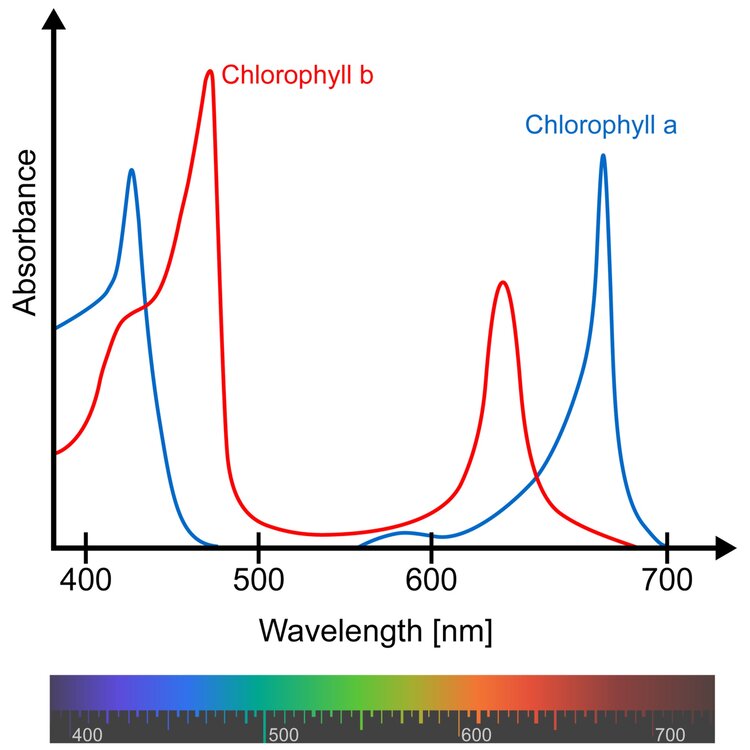
I’ve used this type of grow light to successfully grow ferns in my shower (full article HERE). Notice how close the grow lights are to the plants – this is pretty much how close they need to be in order to be useful – at this distance, I’ve measured 200-300 foot-candles but it probably works out to a higher PAR due to the low sensitivity of the light meter to red light (more on that HERE). Once you’re farther than say, 12 inches, the grow light would only be useful for a “low light” plant like pothos. Also notice that I have 5 LED strips (2-head + 3-head) in order to cover the amount of foliage of these two fern planters.
I turn them on when I go to bed and turn them off when I wake up. The pinkish glow is effectively a night-light!
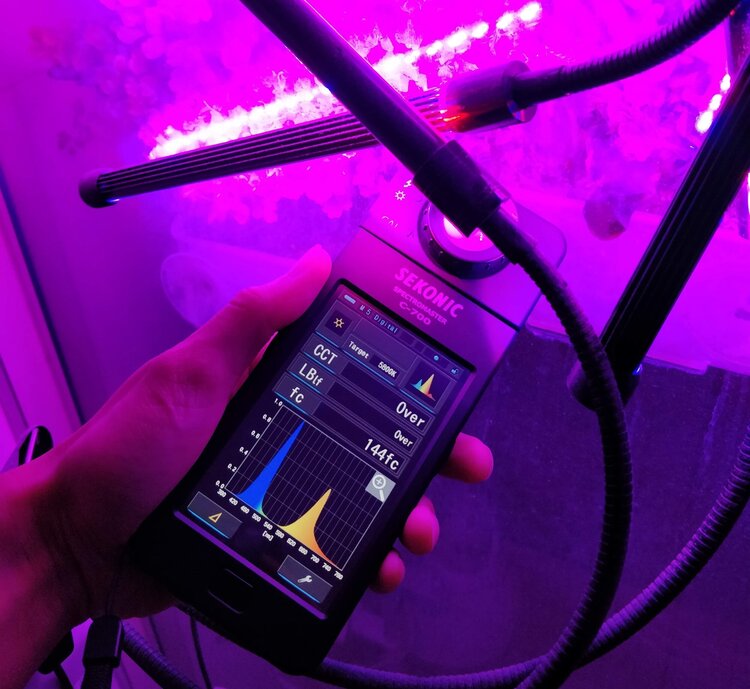
Thoughts: if you don’t mind the pinkish glow, then a few of your very small, low-light plants would benefit from having them on this winter like small ferns, pothos, philodendrons, zz plant – I stress *small* because the coverage of these lights is very limited. Don’t expect to light anything in a 6″ pot or larger. And if your plant requires direct sun, skip this light – it’s much too weak!
T5 LED Lights: https://amzn.to/2KYWPHh
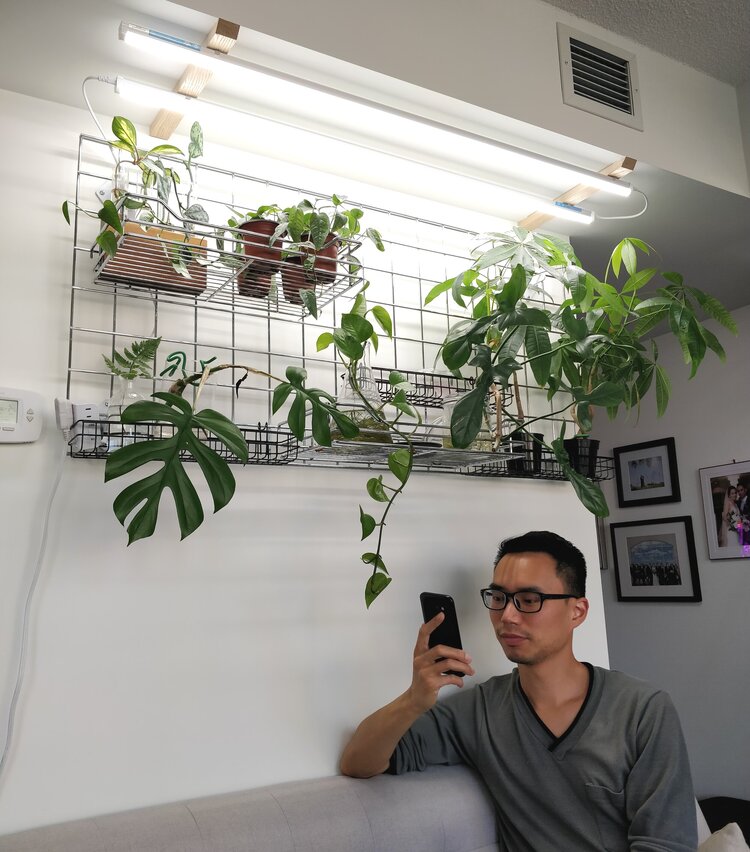
I have 2 of these hanging above my couch to light the plants on my grid wall. Since these lights have a pleasant white color (I got the 5000K version), they are more suitable to also light up my living room. With two lights, I measure 700-800 fc quite close to the lights (about 6-12 inches below); farther away, I’m getting 200-300 fc at the lowest part of the shelf. I’m quite happy with the coverage all around the shelf.
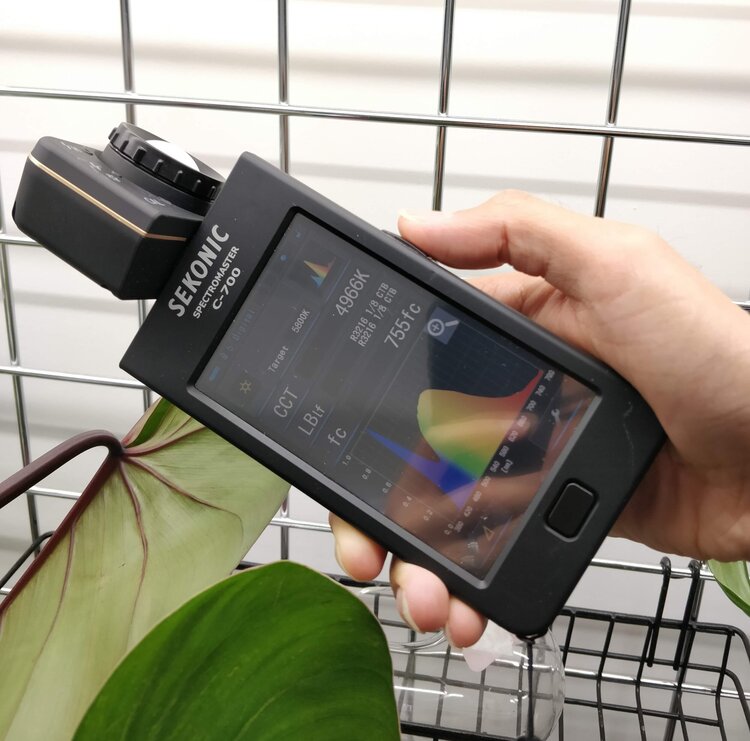
Thoughts: the lights come with mouting brackets that you’ll need to screw into the surface where you want to mount the lights. The fixture itself is quite minimal so the effect is like a bar of pure light, which could be cool if you’re going for that look. If you put your plants no more than 3-4 feet away from these lights, you’ll get good results for “bright indirect light” type of plants. You might be able to support a few sun lovers right up close to the lights or if you put 4 lights together.
SANSI 70W Daylight LED Grow Light: https://amzn.to/34qS1lD
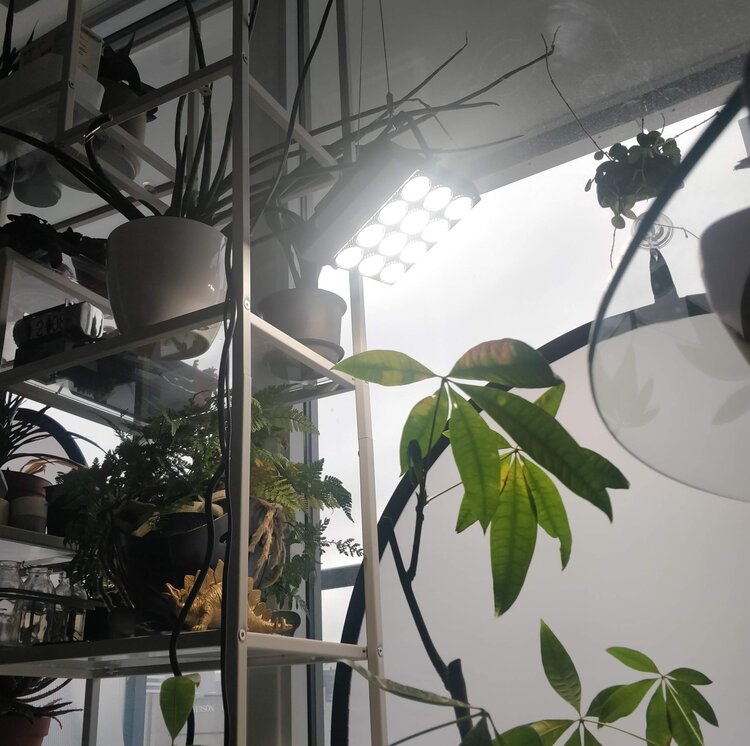
This array of LED lights by SANSI measured in at over 3000 foot-candles about 1 foot away. At this intensity, you could keep succulents and cacti quite happy if you ran the grow light on for about 12 hours. Further away, even though the intensity is much less (300-500 fc at 4 feet away), your coverage area is wider – you could use this as a supplemental light by turning it on say, at 4pm and off at 9pm (5 hours), which would be an excellent boost for most tropical foliage plants.
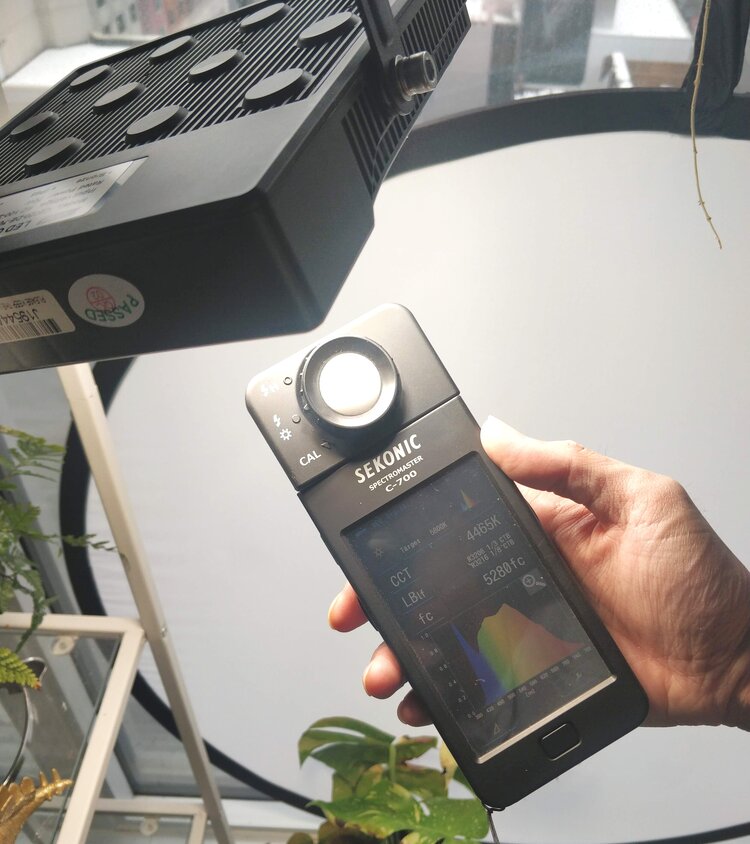
Thoughts: I’m a fan of mounting options – the SANSI 70W LED comes with hardware to mount the panel in several differt ways: suspended by an adjustable wire or mounted directly into an overhead surface. The look is rather utilitarian, which would be fine in a grow space in your basement but may not look as nice in the living room. Overall, this is a very powerful grow light at a good price.
Soltech Solutions Large Aspect White (also comes in Black)
Get 15% off a Soltech Solutions grow light with my code: hpjsoltech15
(House Plant Journal is an affiliate partner with Soltech Solutions)
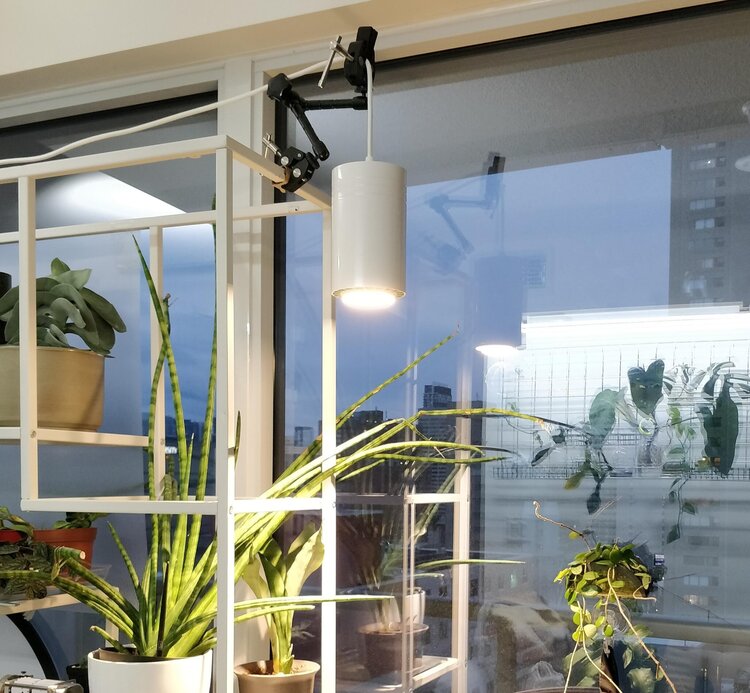
The first thing to note is the elegant design! Both the black and white versions blend in nicely to most interior themes, which means you can keep a plant alive and well anywhere indoors. The other thing that struck me was the power of this light – it’s the most powerful consumer-focused grow light I have ever measured. At one foot away from the light, I measured over 8000 fc – but you definitely should NOT use it this close to a plant (there must be good air flow around the fixture so heat can dissipate – this applies to all grow lights). Using this light at 4 feet away, I measured 500-800 fc, which would make most “bright indirect light” plants very happy. If you had a small collection of cacti and succulents, putting the large Aspect 2-3 feet away would be a great light boost during the winter months.
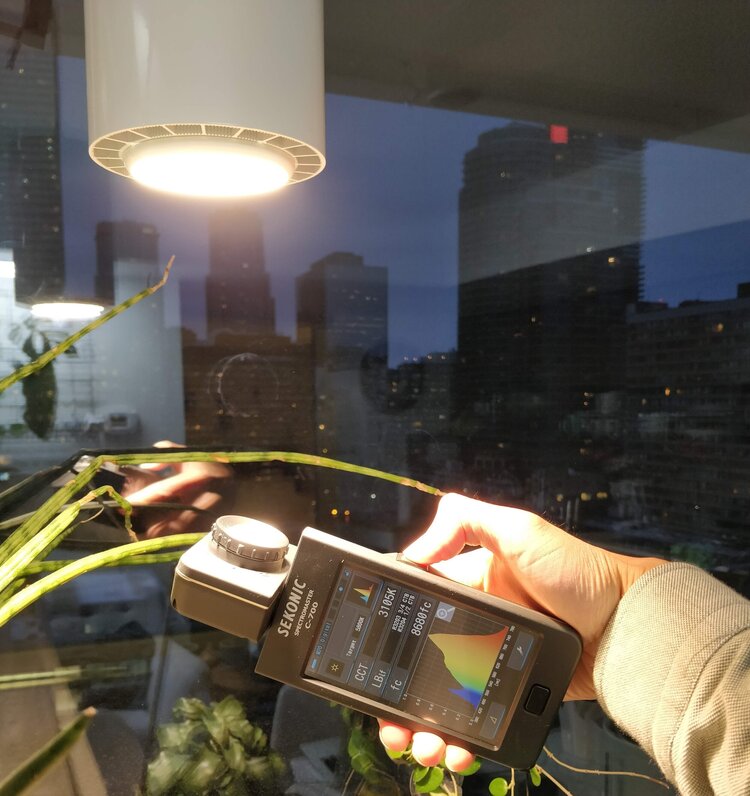
Thoughts: because the Aspect turns on immediately when plugged in (i.e. there is no switch on the fixture), you should use it with a timer, which is included. Soltech Solutions also includes some mounting hardware that allows you to run the wire against the wall and over the ceiling above your plants. If you’re looking for a very powerful grow light that you can proudly display in your living room, the Aspect is an elegant solution.
Here’s my list of common houseplants and their light requirements – WITH NUMBERS!
In Part 2, I’ll use the latest version of Apogee’s full spectrum quantum sensor (a present to myself!) to make some super accurate measurements and we’ll discuss how this relates to DLI (Daily Light Integral).

